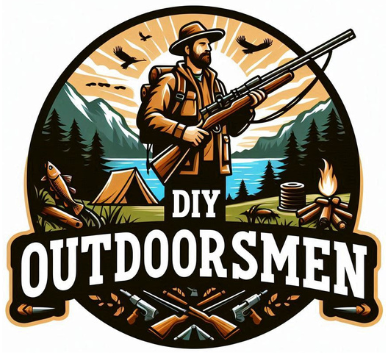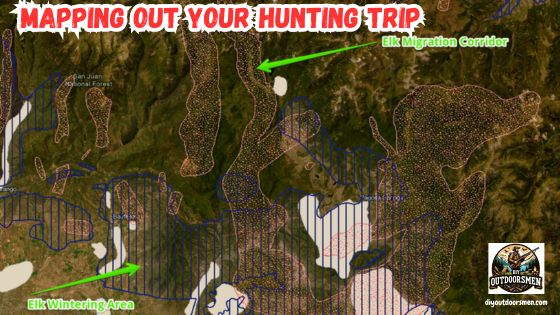Contents
- 1 Access and Analyze Detailed Maps
- 2 Spotting Prime Hunting Locations and Identifying Potential Hunting Spots
- 3 Navigating Access by Marking Entry and Exit Points
- 4 Strategically Planning Movements and Routes
- 5 Factoring in Possible Weather Conditions
- 6 Using Mapping Software for Precision
- 7 Compliance with Legal Rules and Requirements
Mapping out your DIY Hunting Trip is your first step to assuring a fun, safe, and hopefully successful hunt. Choosing the right animal to hunt can make your trip a success right from the start. It’s crucial to decide on a species that piques your interest and is abundant in your chosen hunting locale. Knowing everything about the animal’s behavior, its patterns, and where it typically hangs out is going to give you a serious advantage out there.
QUICK LOOK: 6 Tips for Mapping Out Your Hunting Trip
- Maps are your best friend when it comes to effectively planning a hunting trip. Detailed topographic maps help break down the hunting area, showcasing elevation, water bodies, and types of vegetation.
- E-Scouting Ahead of Time. Choosing the right spot to set up your camp and where you’ll hunt can significantly increase the odds of a successful hunting trip.
- Know where you can hunt. Ensuring you have clear and legal access to your hunting area is a critical part of your hunting trip planning.
- Plan your hunting spots and travel routes. Successfully planning your movements in the field is as much about strategy as it is about getting into the right position.
- Plan for changing weather. Keeping an eye on weather forecasts is essential. Animals tend to change their behavior with different weather conditions, and understanding these shifts can enhance your hunting strategy.
- Know the hunting rules and regs. Familiarizing yourself with all state and local regulations, including specific limits, legal hunting times, and necessary licenses, is crucial for a smooth and lawful hunting trip.
Knowing the regulations for hunting specific species is non-negotiable. Each state has its own set of rules regarding open seasons, limits on what you can hunt, and the necessary licenses. Forgetting these could lead to hefty fines or worse, so it’s worth zeroing in on them right from the beginning.
Search for areas that not only allow hunting your chosen species but are known for having plentiful populations of them. Resources like state wildlife departments or even local hunting clubs could give valuable insights or tips on spots where animals tend to be more active.
Don’t forget to gather as much intel as you can about the terrain. Some animals will dwell in specific types of environments — look for these. Whether it’s a dense forest or an open plain, knowing where your target feels most at home will help you locate them quicker and reduce aimless wandering, increasing your chances for a successful hunt.
Access and Analyze Detailed Maps
Maps are your best friend when it comes to effectively planning a hunting trip. Detailed topographic maps help break down the hunting area, showcasing elevation, water bodies, and types of vegetation. Understanding these features can hint at where animals might roam or rest.
Topographic maps are readily available through various apps and online resources. Apps like onX Hunt and ArcGIS Field Maps offer comprehensive digital maps with the added benefit of showing public and private boundaries, making sure you’re on the right side of property lines.
Offline map access is a smart move since you might find yourself in spots with sketchy cell reception. Many apps allow you to download maps, so you’re covered even when service fails. This ensures you’re armed with all the data you need, right there in your pocket, to avoid getting lost or trespassing accidentally.
Being able to read and interpret these maps is crucial. Pay attention to features that mark changes in the landscape like streams, valleys, and dense vegetation areas. These geographical hints help tailor your approach and movement strategies, making sure you navigate the land without spooking your prey or putting yourself at unnecessary risk.
Spotting Prime Hunting Locations and Identifying Potential Hunting Spots
Choosing the right spot to set up can significantly increase the odds of a successful hunting trip. If you have time, and access, do some preseason boots-on-the-ground scouting.
- When scouting potential hunting spots, focus on areas where animals feel safe and comfortable. Thick brush, dense timber, and other natural covers are where animals often linger, making these prime zones worth exploring.
- Identifying food sources is another key strategy. Open clearings where grass or fruiting trees thrive can act like a buffet for wildlife. Natural water sources such as streams or ponds also attract animals, especially during dry spells, providing an ideal ambush spot for hunters.
- Observing travel corridors is crucial. These are natural pathways that animals use to move between essential areas like feeding grounds and bedding locations. Trails along ridges, riverbank edges, and valleys could signal regular animal activity, guiding you on where to position yourself effectively.
- Marking these spots carefully on your maps ensures you have a planned approach and aids in returning to successful locations on future trips. This preparation lays the groundwork for a structured hunt, helping you better anticipate animal movement and behavior.
Ensuring you have clear and legal access to your hunting area is a critical part of your hunting trip planning.
- Mark out entry points that are within public domains or where you have been granted permission. This eliminates the risk of accidentally trespassing on private land, which can lead to legal issues and sour relations with landowners.
- Marking multiple exit routes isn’t just a safety measure but also provides flexibility. If conditions change or you find more promising areas during your hunt, having alternative paths helps you adapt swiftly without getting caught off guard.
- Understand the terrain of these access points to avoid unexpected obstacles. Sometimes a route may look straightforward on a map but could be challenging due to steep terrain, water crossings, or thick vegetation. Accurate mapping and reconnaissance can help you navigate these hurdles smoothly.
Remember, careful planning of entry and exit points not only ensures safety but also helps maintain the region’s openness for future hunts. Respect for boundaries and thoughtful navigation fosters goodwill, preserving hunting access for the long term.
Strategically Planning Movements and Routes
Successfully planning your movements in the field is as much about strategy as it is about getting into the right position. Carefully thought-out routes ensure that you approach your target areas discreetly and efficiently.
- Wind direction plays a pivotal role in planning your moves. Animals have keen senses and can detect human scent from a distance. Use the wind to your advantage by approaching from downwind angles to reduce the chance of being detected.
- Leveraging natural cover during your approach can keep you hidden from sight. Features like ridges, ditches, or clusters of shrubs make great concealment tools, letting you move with reduced risk of alerting wildlife.
- Consider the time of day and typical behavior of your target species when planning routes. Animals are often most active during dawn and dusk, so timing your movements to align with these patterns increases your chances of spotting them.
Planning routes in line with these elements not only increases safety but also maximizes the likelihood of a successful and rewarding hunting trip. Taking the time to map these out ensures each step in the field is purposeful.
Factoring in Possible Weather Conditions
Keeping an eye on weather forecasts is essential. Animals tend to change their behavior with different weather conditions, and understanding these shifts can enhance your hunting strategy.
Rain or snow can influence both animal movement and your own ability to navigate the terrain. Wet conditions might make some trails slippery or harder to traverse, altering your planned routes.
Sudden changes in weather are always a possibility, so it pays to be prepared. Have alternate plans in place that allow you to adapt quickly without losing valuable time in the field.
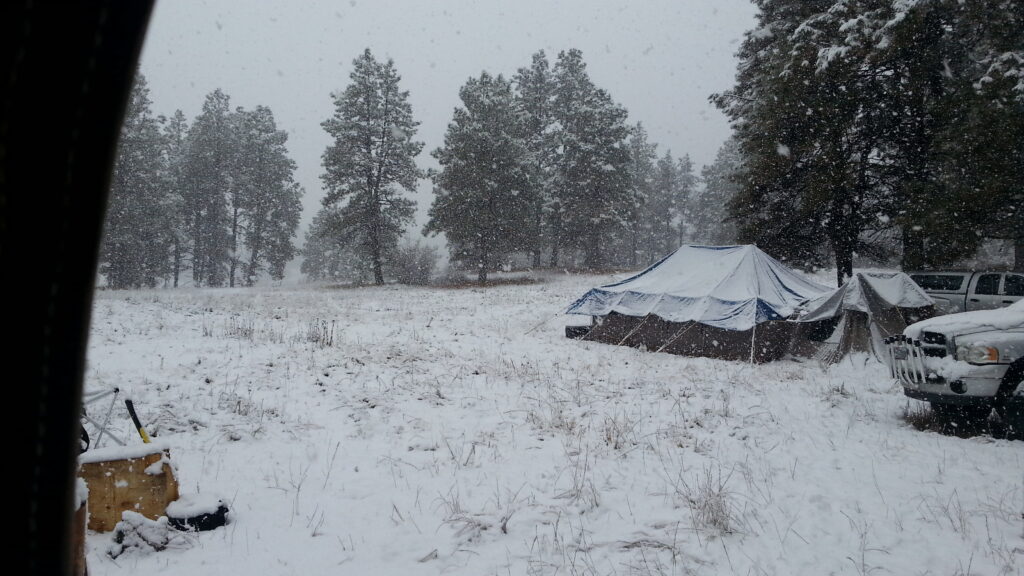
Knowing how various weather patterns impact the region you’re hunting in helps you anticipate where animals might be headed. Cold fronts might push them to lower altitudes, or rain could drive them to seek cover, influencing your choice of hunting spots.
Being well-versed in the typical climate patterns of your hunting area ultimately ensures a safer and more effective hunting trip. This pre-emptive strategy helps avoid getting caught unprepared, ensuring you make the most of your time outdoors.
Using Mapping Software for Precision
Harnessing digital tools elevates your hunting trip to the next level. Mapping software and apps bring a level of precision and convenience that’s hard to achieve with traditional maps alone.
Apps like onX Hunt, Huntstand, or Garmin Earthmate allow you to mark key locations, access points, and your planned routes directly onto a digital platform. Having this information on your phone or GPS device means real-time navigation assistance, right there at your fingertips.
These apps also assist in accurately recording GPS coordinates of important locations. Whether it’s a particularly active feeding spot or a reliable water source, saving these coordinates ensures you can find and return to these sites with ease every time.
Digital maps provide a constantly updated picture of hunting areas, factoring in changes in land boundaries and newly available hunting grounds. This keeps your information current and reliable, helping you to remain compliant with any new regulations.
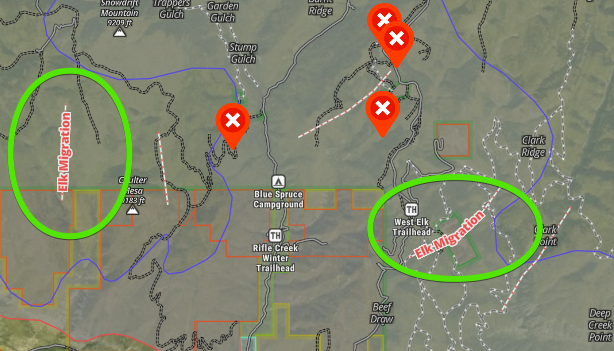
Using these digital resources improves your overall hunting strategy, offering deeper insights and a greater level of control over your trip planning. Leveraging technology effectively can bridge the gap between guessing and knowing.
Compliance with Legal Rules and Requirements
When planning your hunting adventure, being informed about local laws and ethical hunting practices is not just courteous—it’s essential. Familiarizing yourself with all state and local regulations, including specific limits, legal hunting times, and necessary licenses, is crucial for a smooth and lawful hunting trip.
- Always respect private property boundaries. Trespassing can lead to conflicts and possible legal repercussions. Ensure you’ve got the proper permissions or are within public hunting zones where you’ve secured access.
- Safety should be the cornerstone of every hunting expedition. Establish clear communication plans with your hunting buddies about your whereabouts and expected return times. Always have a backup plan for emergencies that includes basic first aid supplies and ensuring your phone or emergency locator is charged.
- Sustaining good relationships with local landowners by adhering to rules about property use can open more hunting opportunities in the future. Building this trust emphasizes the importance of ethical behavior on and off the field.
By conscientiously following these practices, you not only enjoy a successful hunt but also contribute to preserving the hunting culture for future generations. This awareness keeps the hunting tradition hearty and enduring.
Check Out Our Latest Hunting Articles:
- Complete Guide On Tracking Game Animals
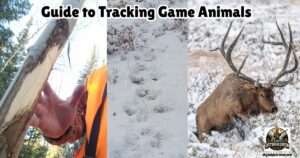
- DIY 4-Step Guide To Field Dressing And Quartering A Deer
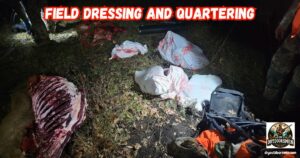
- Night Vision Binoculars For Nocturnal Hunting
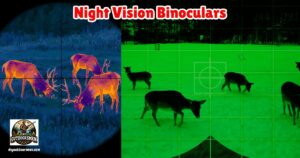
- The Science Behind Camouflage Patterns For Deer Hunting

- Binocular Accessories For Hunters

- 9 Tips for Using Trail Cameras To Track Deer Movements

As always, stay safe, enjoy the journey and please try to leave it cleaner than you found it. If you have any comments, questions, ideas, or suggestions please leave them in the comment section below and I’ll get back to you ASAP. You can follow us on YouTube: Man Art Creations for videos of our DIY Adventures.
P.S. – Thanks so much for checking out our blog we really appreciate it. Just so you know, we may receive a commission if you click on some of the links that appear on our site. This helps us keep our content free and up-to-date for everyone. We appreciate your support!
